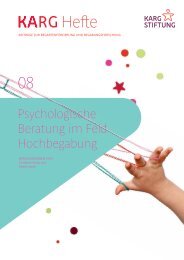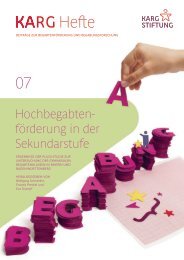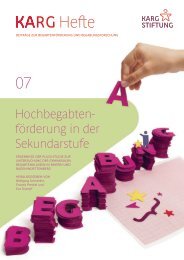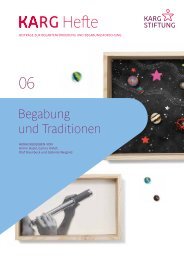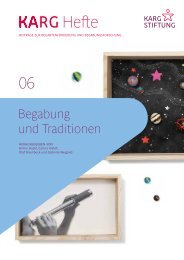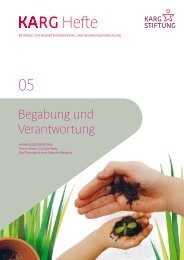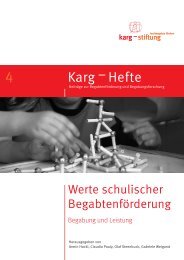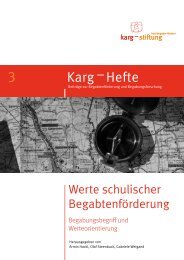FAQS: Frequently asked questions about giftedness
The Karg Foundation receives a lot of questions on the subject of giftedness—FAQs (Frequently Asked Questions)—far more often indeed than it did ten years ago. And this is a good thing! Many people involved in the educational processes of children have come to realize that giftedness can also be a fundamental personality trait of children and adolescents. The Karg Foundation wants to answer the questions you may have not only as educational and psychological professionals in educational institutions or working as educational providers, policy makers, or in training and further education institutes, but as parents and gifted people also: What is giftedness? How can it be identified? Who can provide advise for gifted children and their families? How can they be supported in the best possible way?
The Karg Foundation receives a lot of questions on the subject of giftedness—FAQs (Frequently Asked Questions)—far more often indeed than it did ten years ago. And this is a good thing! Many people involved in the educational processes of children have come to realize that giftedness can also be a fundamental personality trait of children and adolescents.
The Karg Foundation wants to answer the questions you may have not only as educational and psychological professionals in educational institutions or working as educational providers, policy makers, or in training and further education institutes, but as parents and gifted people also: What is giftedness? How can it be identified? Who can provide advise for gifted children and their families? How can they be supported in the best possible way?
You also want an ePaper? Increase the reach of your titles
YUMPU automatically turns print PDFs into web optimized ePapers that Google loves.
What types of support can<br />
schools develop to supplement<br />
classroom instruction?<br />
Schools can create many other opportunities for<br />
gifted students in addition to offering support in a differentiated<br />
classroom setting. Possibilities range from relatively<br />
simple individual programs, such as afternoon study<br />
groups, to more complex approaches that involve the<br />
school as a whole.<br />
Even selected individual opportunities can be very<br />
helpful and important—these include, for example, offering<br />
special all-day courses, encouraging students to take<br />
part in competitions and helping them prepare for them,<br />
or offering them the opportunity to take additional elective<br />
courses in lower and upper secondary school. Although<br />
somewhat more elaborate to organize, more complex<br />
models have a greater impact. Positive experiences have<br />
been reported, for example, with “pull-out programs” at<br />
elementary schools, where gifted and high-achieving children<br />
leave their regular classes one day a week and are<br />
supervised together by a teacher while working on advanced<br />
projects. In addition, the “revolving door model”<br />
originating from the USA has proven successful, allowing<br />
students to utilize the school’s various learning opportunities<br />
with great flexibility by temporarily leaving their<br />
learning group and participating in certain instructional<br />
units in other courses, higher grades, or—as in the case<br />
of pull-out—in a group specifically created to work on<br />
projects. For older students, the school can provide support<br />
in organizing a school year abroad or in beginning an early<br />
university study program.<br />
80 81









